I’m a fan of all things fall. The cooler weather, Halloween, sports are in full swing – sign me up for all of it. Yet it seems like every year around this time you can count on 2 things that I don’t enjoy:
1) A brand takes pumpkin spice too far
2) A well-known pundit predicts a stock market meltdown
Don’t get me wrong, pumpkin pie is fantastic and even pumpkin spiced lattes are good every once in a while. But c’mon Pringles…really?

(Fortunately these seem to be out of production)
As for point #2, why do analysts always seem to get bearish around now? Probably because some of the worst stock market crashes in history have occurred in October. The worst daily loss occurred on October 1987 when the Dow fell 22.6%. The crash that started the Great Depression happened in October of 1929. This has been dubbed The October Effect – and while it has been largely disproven (September has the worst performance historically), it doesn’t stop doomsayers from coming out to tell us that the sky is about to fall.
The person predicting a crash this year? Robert Kiyosaki, author of the popular personal finance book “Rich Dad, Poor Dad”. This past Sunday he Tweeted this to his 1.7 million followers:
@theRealKiyosaki
Giant stock market crash coming October. Why? Treasury and Fed short of T-bills. Gold,silver, Bitcoin may crash too. Cash best for picking up bargains after crash. Not selling gold silver Bitcoin, yet have lots of cash for life after stock market crash. Stocks dangerous. Careful
I try not to get too wound up about these kinds of people. This happens frequently and usually the best bet is just to ignore them. But what really gets me going is how consistently wrong some of these people can be and how much damage they can do to folks saving money for retirement. And there is no accountability to the author for these predictions if they’re wrong. Just think if you were a handful years from retirement in 2011, just read “Rich Dad, Poor Dad” (32 million people did), and started to see the tweets below.
Now what if you went to cash and waited for the “dust to settle”? The S&P has returned over 300% since the first tweet in 2011.
Now that 300% return in the S&P 500 didn’t come easy. Investors had to hold on through 3 different 15-30% drops in the index throughout that time. Is that tradeoff worth it? Or is it worth trying to miss these corrections at the expense of future gains if you’re wrong? I’d defer to the chart below. I would argue that more harm has been done to investors trying to miss a stock market correction than the corrections themselves.

The stock market had quite a month. There are a few prevailing opinions about where we are in the economic cycle and all of them had a moment in September.
Viewpoint 1 – The global economy is going to come roaring back based on pent up demand from the COVID shutdowns.
9/22/21 – Stocks Rally Amid Growth Optimism
Viewpoint 2 – The supply chain issues caused by those shutdowns combined with the government stimulus is going to cause runaway inflation.
9/29/21 – Fed Chair Powell Calls Inflation ‘Frustrating’ and Sees it Running Into Next Year
Viewpoint 3 – The global economy is a house of cards that could collapse at any moment.
9/20/21 – Why Evergrande Has Suddenly Exploded into a Potential Global Financial Crisis
The market ultimately ended up shrugging off the Evergrande crisis but still ended down -3.61% on the month as of this writing on inflation concerns. It is still up over 16% YTD.

Some of you have asked about the debt ceiling debate and the possibility that the US might either run out of money or default on its debt. The last time this was a big issue (2011) the US lost our AAA bond rating and the market sold off over 15%. The short answer: unless Congress does something stupid, we won’t default.
I agree that we should absolutely consider how much we spend as a country and on what. But the debt ceiling discussion itself is entirely ceremonial. It’s not that Congress is arguing about money that might be spent in the future, the debt limit is arguing about money that has already been approved to spend. Here’s the simplified version from Cullen Roche:
1) Congress establishes a “debt ceiling”, a fake limit on how much national debt we can issue.
2) Then Congress approves legislation that will require new debt in the future.
3) That new legislation causes a breach of the debt ceiling.
4) Congress pretends they’re going to default and grandstand about the national debt. They shutdown the government for a week or two.
5) Then the debt ceiling gets raised because past legislation forces Congress to raise the debt ceiling or default.
6) Rinse, wash, repeat.
Pragmatic Capitalism
We’ll eventually get a deal, but don’t be surprised to see some short-term pain in the markets (and for the people that might be impacted through any kind of government shutdown).





